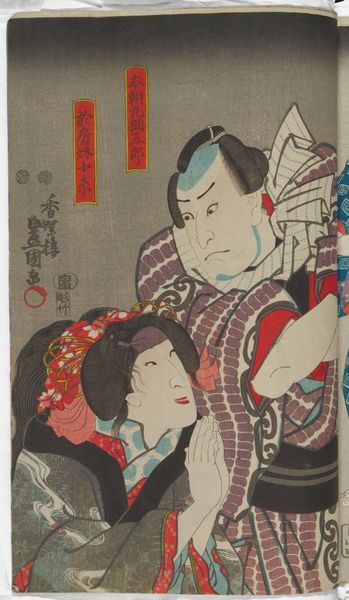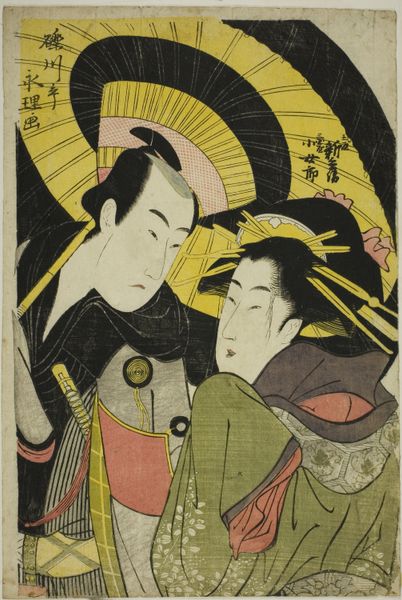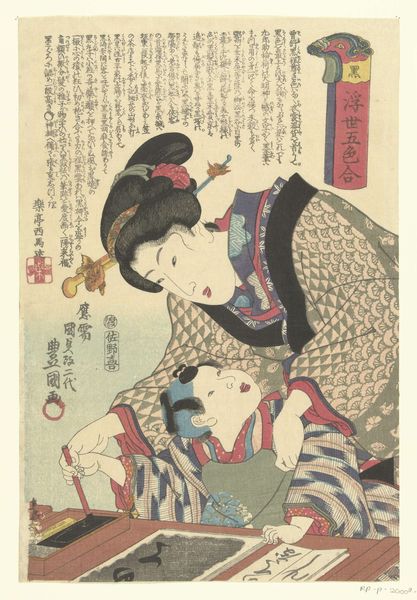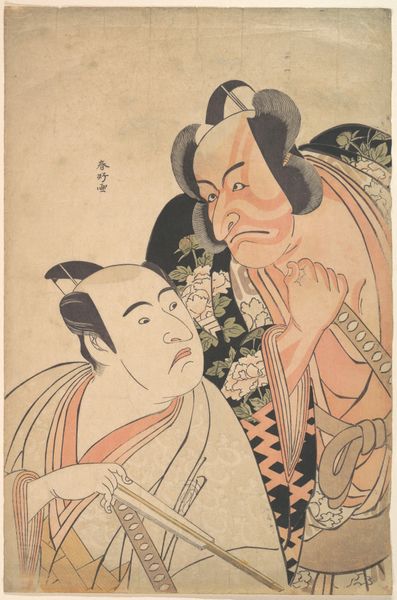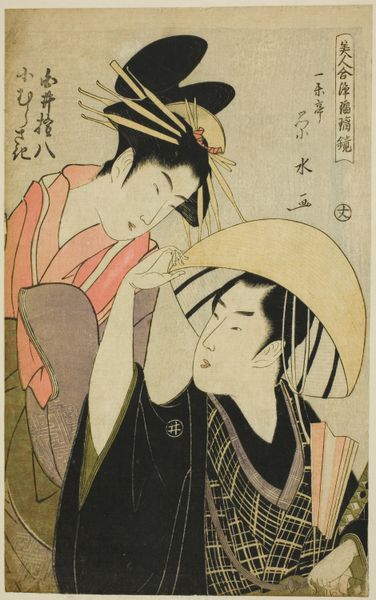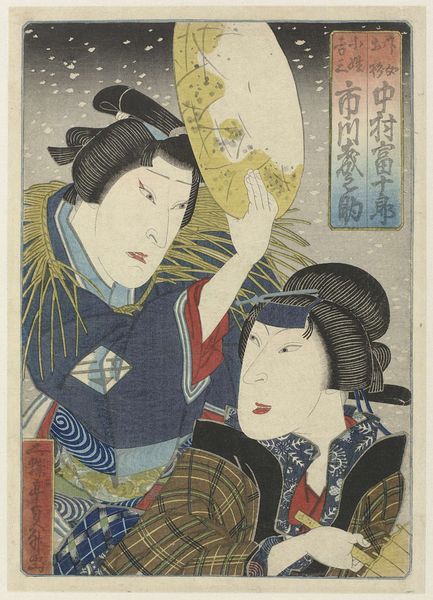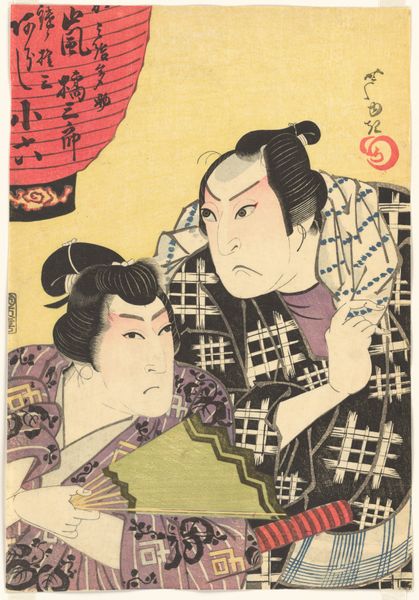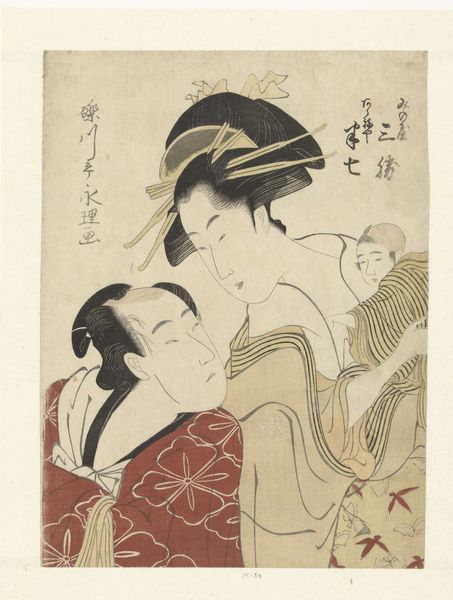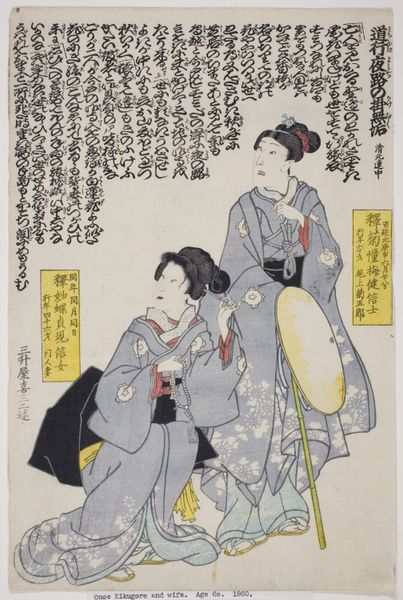
Bandō Mitsugorō III as Daihanji Kiyozumi and Arashi Koroku IV as Koganosuke 1821
0:00
0:00
print, woodblock-print
#
portrait
# print
#
asian-art
#
ukiyo-e
#
japan
#
figuration
#
woodblock-print
#
erotic-art
Dimensions: Image: 15 × 10 in. (38.1 × 25.4 cm)
Copyright: Public Domain
Editor: This is "Bandō Mitsugorō III as Daihanji Kiyozumi and Arashi Koroku IV as Koganosuke," a woodblock print by Shunkōsai Hokushū from 1821. There's a dramatic tension in the composition; the actors' expressions and their positioning suggest conflict. How do you read this print? Curator: What strikes me is how this print encapsulates the rigid social hierarchy of Edo-period Japan, cleverly subverted by the subversive world of Kabuki. The print captures actors, elevated figures despite their profession being viewed with some social disdain. This tension between admiration and societal expectations plays out in the highly stylized poses and expressions. Note how each actor embodies both strength and vulnerability, perhaps reflecting the precarious position of artists within that societal structure. Editor: I see what you mean. The cherry blossoms in the background contrast with the serious expressions on their faces. Curator: Exactly. Consider those cherry blossoms not merely as decorative elements, but as symbols of transience and the fleeting nature of life – deeply resonant in a culture acutely aware of mortality, and further amplified within the ephemeral world of theatre. What’s fascinating is how these prints themselves acted as a form of accessible media, circulating images of admired figures and subtly challenging established norms. Think of them as the paparazzi shots of their time. What does this suggest to you about art’s function at the time? Editor: That the art was really a commentary on fame and celebrity. Curator: Precisely, and through that lens, the woodblock print became a vital form of social commentary, challenging rigid hierarchies in a way that sparked a visual and cultural dialogue. Editor: I never thought about it like that! Thanks, I’ve learned so much today about Ukiyo-e. Curator: My pleasure! Examining art through its cultural framework gives us a far better insight into how society worked back then and can shine a light on inequalities.
Comments
No comments
Be the first to comment and join the conversation on the ultimate creative platform.


